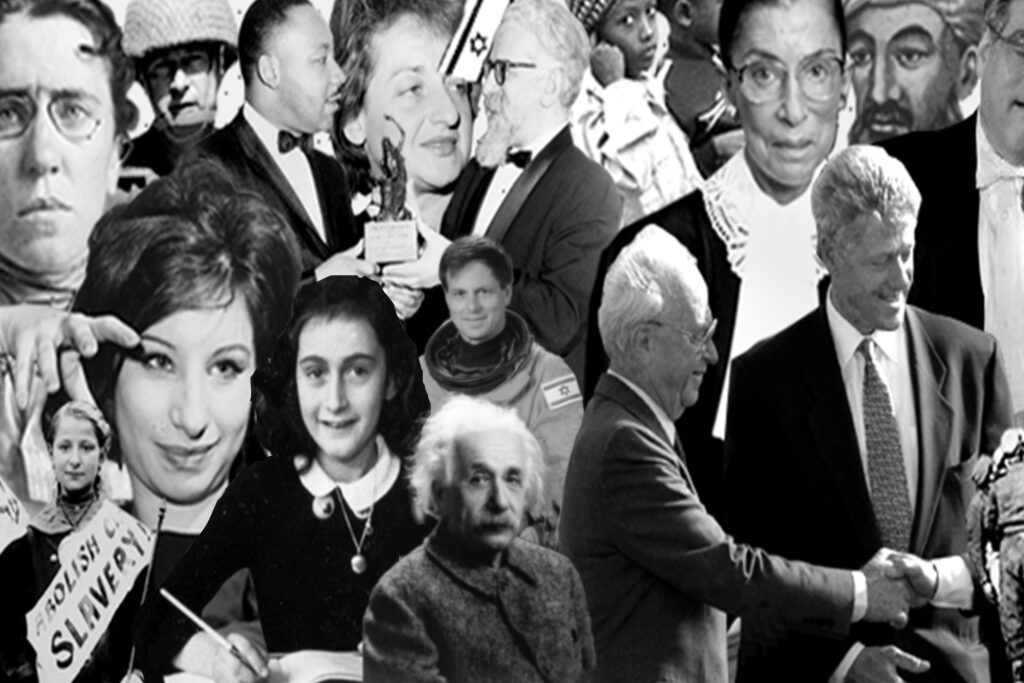NEW YORK (JTA) — In his 2007 State of the Union address, President Bush touted biomass-derived ethanol as a way to reduce carbon dioxide emissions. He specifically mentioned corn, switch grass, a fast-growing shrub called “biomass willow” and wood chips as “cutting-edge methods of producing ethanol.”
Sources of biomass energy can include food crops, grasses (for example, sorghum, sugarcane), other plant matter and a variety of tree species, as well as agricultural and forestry waste and much more. Wood, however, is still the most common source.
With Bush’s speech coming a few weeks before Tu B’Shevat, the “New Year of the Trees,” I couldn’t help focusing on his mention of wood chips. It inspired me to write an article titled "Trees, Shrubs and Bush: Breaking the Oil Addiction."
What was most notable about his speech was Mr. Bush acknowledging for the first time that America had a serious problem: an addiction to oil. Of course, admitting to an addiction is the first step on the road to recovery, but what was of equal interest and concern at the time was that while the president devoted considerable time in his address to the topic, he never actually used the terms “global warming” or “climate change.”
At Tu B’Shevat two years later we have a new president and I am no longer thinking about George Bush, but I am always thinking about climate change. So this year as I sample the foods traditionally eaten at the Tu B’Shevat seder to commemorate springtime in Israel — dates, almonds and figs, to name a few — I’ll not only be thinking about the farmers who planted them but the distance the foods traveled and the amount of greenhouse gases associated with their journey.
According to the Worldwatch Institute, the average food item travels 1,500 to 2,500 miles from farm to fork. For many, the foods featured at the seder are not locally grown and therefore catapult that “food miles” figure off the charts, increasing our carbon footprint.
One way to assuage our guilt is to be more intentional in taking energy-efficient actions, or to purchase carbon offsets to make up the difference for the carbon emissions being released in the atmosphere from our seder food choices.
We can even integrate energy action into the four worlds of the kabbalistic Tu B’ Shevat seder.
The seder begins with the first world: Olam Ha-Assiyah, the world of action — concrete actions. One way to elevate this off the page is by engaging in emissions-reducing projects as simple as installing compact fluorescent light, or CFL, bulbs; no longer taking plastic bags or purchasing plastic water bottles, to driving less and eating mostly locally grown, organic food; or reducing our meat intake.
The second world: Olam Ha’Yetzirah, the world of formation. It is the world in which we celebrate the ability to cause a transformation of raw materials. We have the ability to think creatively when it comes to solving our energy problems. We can transform renewable sources such as solar and wind into healthier, more sustainable energy rather than burning finite carbon-based fossil fuels that add greenhouse gases to the atmosphere.
The third world: Olam Hab’riyah, the world of creation. According to many rabbinic sources, the prohibitions and obligations involved in observing Shabbat, the ultimate celebration of Creation, directly reflect our responsibility to protect the Earth. To truly recognize and honor the beauty and integrity of Creation, we need to refrain from over-consumption. This and other actions that negatively impact our world waste energy, which can result in changing the climate.
Finally, the fourth world: Olam Ha’Atzilut, the world of emanation. It is the purely spiritual world in which we are appreciative of the Source of all Creation and in awe of the mystery of Creation.
Actions such as purchasing carbon offsets and cleaner energy can seem ethereal and mysterious. They aren’t tangible physical actions, so investing in them often is a leap of faith. But sometimes we need to take actions that are based on faith alone because it’s the right thing to do.
There is a Talmudic tale often told at Tu B’Shevat of Honi, who planted trees in his time that would bear fruit for future generations. It is a reminder of our responsibility and that our actions in this world do make a difference.
Calculate your carbon footprint and find out how many worlds would be needed if everyone on the planet lived like you.
(Barbara Lerman-Golomb is the director of community relations for Hazon.)

Help ensure Jewish news remains accessible to all. Your donation to the Jewish Telegraphic Agency powers the trusted journalism that has connected Jewish communities worldwide for more than 100 years. With your help, JTA can continue to deliver vital news and insights. Donate today.





